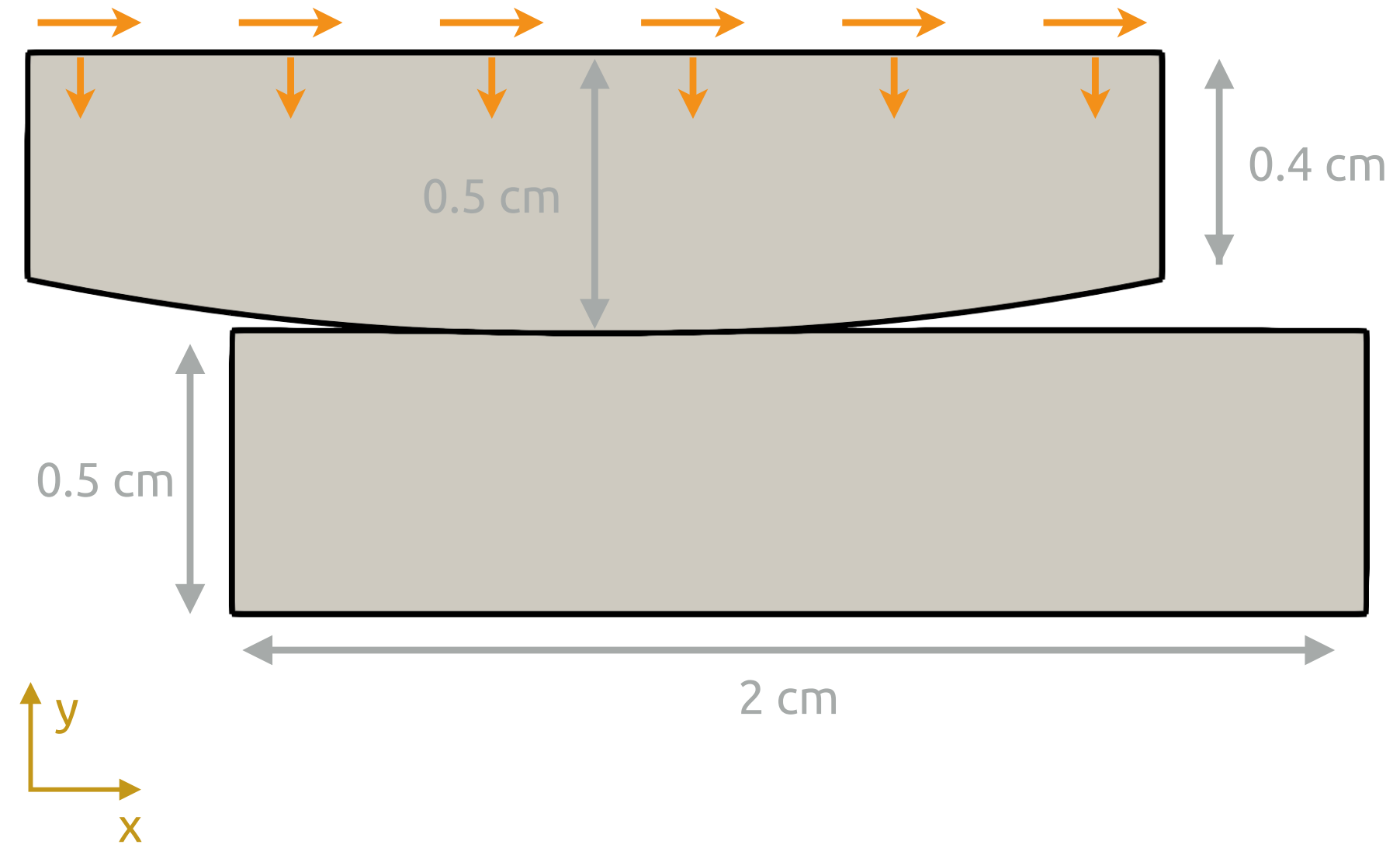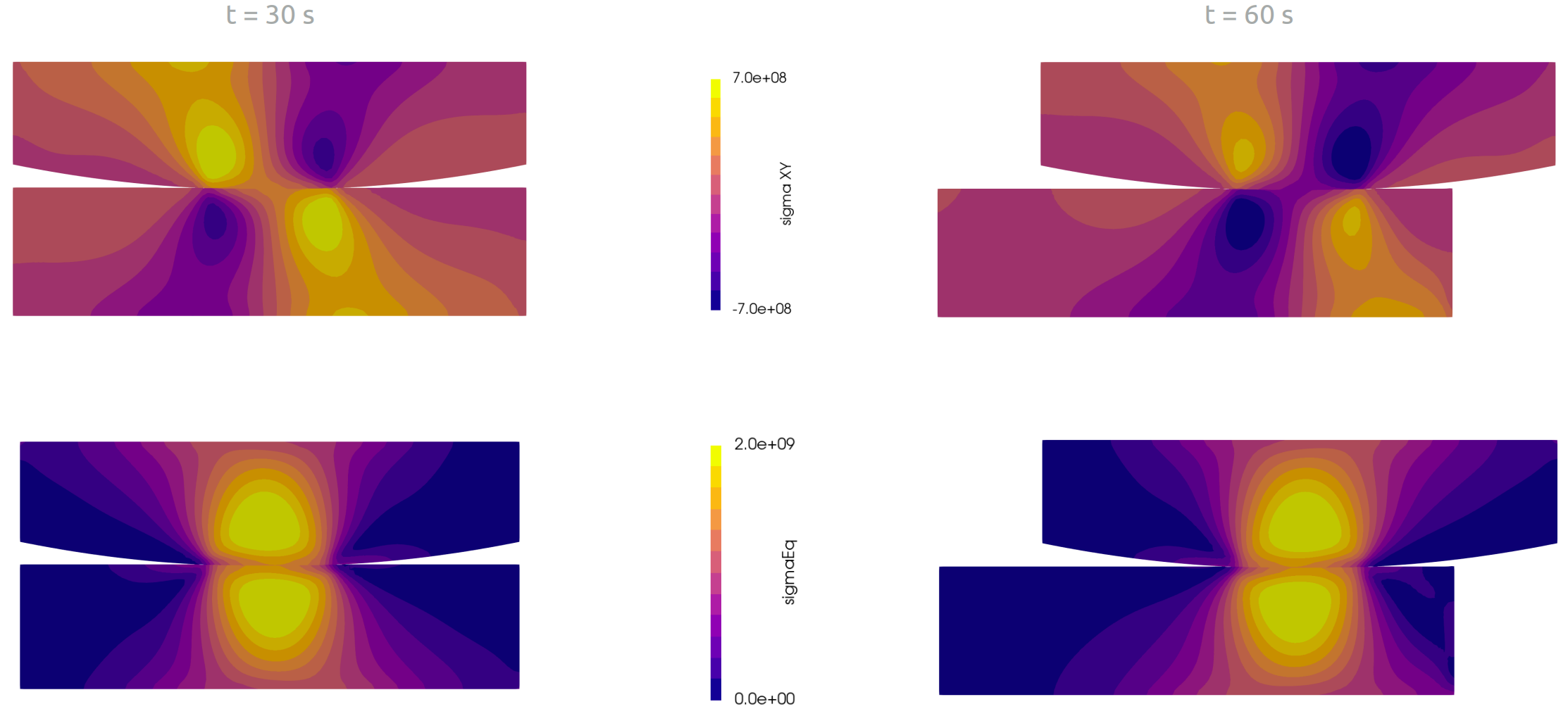Frictional sliding of an elastic cylinder segment: slidingFrictionBall
Prepared by Philip Cardiff and Ivan Batistić
Tutorial Aims
- Demonstrate the analysis of a transient frictional contact problem.
Case Overview
This case consists of an elastic cylindrical segment (the "ball") that is pressed into the top of an elastic block (Figure 1). The ball initially slides over the block in the positive \(x\) direction before switching direction and sliding in the negative \(x\) direction. Both bodies have the same material properties: density \(\rho=7854\) kg/m\(^3\), Young modulus \(E=200\) GPa and Poisson's radio \(\nu=0.3\). The bottom surface of the elastic block is fixed (zero displacement), whereas the top surface of the cylindrical segment has a prescribed time-varying displacement: \(d_y = -0.1 \mathrm{~mm}, \qquad d_x = \begin{cases}2 t / 50 \mathrm{~cm}, & \text { if } t \leq 50 \mathrm{~s} \\ 2(100-t) / 50 \mathrm{~cm}, & \text { if } 50<t \leq 100 \mathrm{~s}\end{cases}\) where \(t\) is the time. The case is solved using a 2-D model under the plane strain assumption and without gravitational effects. Time is discretised using 100 equally spaced increments. At the contact interface, a frictional response is considered, and the Coulomb coefficient of friction is set to 0.1.

Expected Results
The \(\sigma_{xy}\) and \(\sigma_{eq}\) fields at time \(t=30\) and \(t=60\) s are shown in Figure 2, demonstrating the shear stress \(\sigma_{xy}\) flips sign after the sliding direction changes. The evolution of the \(\sigma_{xy}\) and \(\sigma_{eq}\) fields in time are shown in Video 1.

Video 1: Evolution of the \(\sigma_{xy}\) and \(\sigma_{eq}\) fields during sliding
Running the Case
The tutorial case is located at solids4foam/tutorials/solids/linearElasticity/slidingFrictionBall. The case can be run using the included Allrun script, i.e. > ./Allrun. In this case, the Allrun consists of creating the mesh using blockMesh (> blockMesh) followed by running the solids4foam solver (> solids4Foam).
The case is currently not working with the ORG version of OpenFOAM!